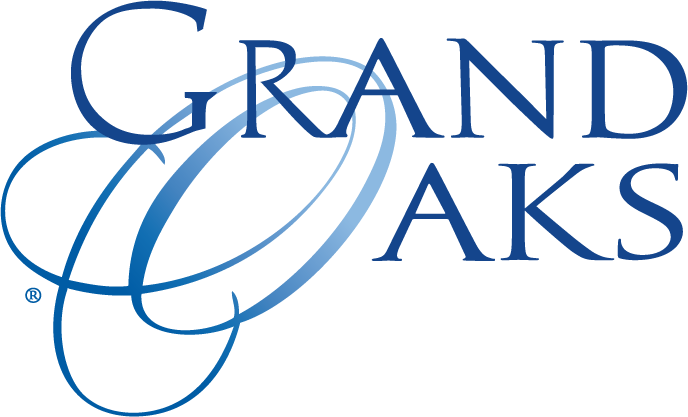4 Min Read
Could Cancer Deaths Be Preventable?

Each February, National Cancer Prevention Month reminds us that healthy lifestyle habits and early detection can prevent the development of cancers and increase life expectancy. It is estimated that in 2021, almost 1.74 million Americans will be diagnosed, and 606,800 will die from cancer. Between 42 and 50 percent of both cases and deaths from the most common cancers can potentially be prevented through deliberate choices and prevention strategies.
This National Cancer Prevention Month, Grand Oaks is offering ways to significantly reduce your risk of developing some of the most common and deadly cancers, such as colorectal, skin, lung, breast, and prostate.
Stop Smoking or Don’t Start
The estimated 42 to 50 percent of potentially avoidable cancer cases include the 19 percent of cancers believed to be caused by smoking. Another 18 percent of cases stem from a combination of being overweight, excessive alcohol consumption, poor nutrition, and/or lack of physical activity. Quitting smoking is one of the best things you can do for your health, as almost 90 percent of lung cancer is related to smoking.
While lung cancer is the second most common cancer in the U.S., it remains the leading cause of cancer death. Carcinogen exposure over time can also cause cancer. Chemicals like radon, diesel exhaust, and gasoline are incredibly harmful, and attempts to monitor levels in the home and outdoor air quality can protect you from becoming sick from these gases.
Healthy Diet, Weight, and Physical Activity
Having a daily diet loaded with plenty of fresh vegetables, fruits, beans, and whole grains is the key to proper nutrition. Eat plenty of fresh produce, limit red meat and processed meats, and keep alcohol consumption minimum. Men should try to have a limit of two drinks per day, and women should ideally have no more than one.
Next, it’s critical to maintain a healthy weight. Being overweight or obese increases your chances of getting certain cancers like colon or rectal. An active lifestyle or daily physical activity is critical to reaching a healthy weight. Adding even 30 minutes of light-to-moderate exercise per day may help reduce your risk of developing cancer.
Protect Your Skin from the Sun
Skin cancer is the most common and most preventable cancer. Approximately 1 in 5 Americans will develop skin cancer by the age of 70. However, when detected early, the five-year survival rate for melanoma is 99 percent.
An estimated 90 percent of skin’s aging is caused by the sun, but the damage is cumulative. It’s never too late to take steps to protect your skin and minimize your risk of developing skin cancer later in life.
To best protect your skin from damage and dramatically lower your risk of developing skin cancer:
- Wear clothing that covers any exposed skin, including hats, sunglasses, and pants
- Seek shade when possible
- Use a sunscreen with an SPF of at least 15 or higher and reapply it frequently when outdoors
- Use cosmetics with SPF protection
- Avoid indoor tanning beds, which emit higher UV radiation than the sun at its peak intensity
Vaccinations and Advanced Technologies
Cancer screenings save lives. These screening tests can include colonoscopies, mammograms, pap smears, and visual skin exams. For certain cancers, vaccines exist that are proven to be safe and highly effective at preventing cancer. The hepatitis B vaccine, for example, can protect you from developing liver cancer.
Advanced technologies hold the most promise for earlier detection in the future, less expense in diagnosing, lower false-positives, and better patient outcomes. These interventions include proton therapy, which unlike x-rays, only target the tumor and not the nearby healthy tissue. Liquid biopsies require only a blood draw to detect multiple early-stage cancers.
Other interventions include tumor profiling tests, immunotherapies, and precision (or personalized) medicine, which looks at gene changes that can affect a person’s risk for developing cancers.
Public Education and Policies
Effective public education and policy initiatives can dramatically decrease cancer rates. Smoking among adults decreased by two-thirds since the U.S. Surgeon General’s Report in 1965 and hit an all-time low of 13.7 percent in 2018. Today, it hovers around 14 percent. Nevertheless, lung cancer remains the leading cause of cancer-related deaths for men and women, with a mortality rate of 3 in every 10 cancer deaths still caused by cigarette smoking.
Other forms of effective education include online and digital videos, which offer healthy nutritional and lifestyle cancer-prevention information to medically-vulnerable individuals such as seniors, minorities, or low-income Americans.
Think about the lifestyle changes you could start today that might lower your chances of developing cancer. As Henry David Thoreau wrote, “Things do not change; we change.”

0 Comments